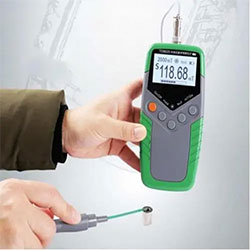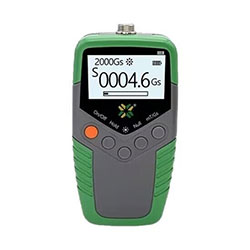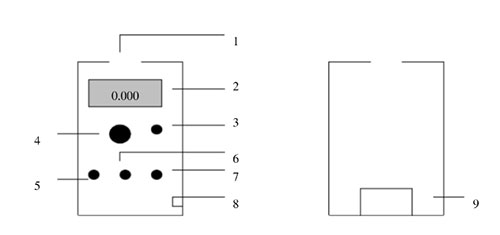How to Use a Gauss Meter?
A Gauss meter, also known as a Tesla meter, is a device used to measure the strength of a magnetic field. It is named after Carl Friedrich Gauss, a German mathematician who made significant contributions to the field of magnetism. A Gauss meter measures the magnetic flux density, which is typically expressed in units of Gauss (G) or Tesla (T). In this article, ATO industrial automation will introduce the usage method of gauss meter.
Names of Each Component
- Sensor socket: To connect sensors and instruments.
- LCD: Liquid crystal display.
- Calibration potentiometer: To adjust the power supply current of the sensor.
- Zero potentiometer: Place the sensor in the zero magnetic field, and if there is a numerical display, adjust the zero potentiometer to make the display zero.
- Calibration and measurement conversion switch: Press the switch to switch from measuring data display to displaying the value of the sensor supply current.
- Range conversion switch: Press the switch to switch from 20MT to 200MT.
- Power switch: Press to conduct.
- External 9V power socket: After connecting the external contact, use AC220V to work.
- Battery box: To place 9V stacked batteries.
Usage Method
- Install the battery and adjust the zero adjustment knob to display zero.
- Press the 20 mT range change over switch.

- Place the concave dot on the head of the gauss meter sensor vertically above the surface of the ground sensor, with its top perpendicular to the surface of the steel rail at a distance of 110mm.
- The displayed value is the magnetic induction intensity of the point, which is the mT value, with 1mT=10Gs and not less than 40Gs.
- After the instrument is tested, remove the battery from the battery box.
Technical indicators of Gauss Meter
- Range: 0-20mT-200mT
- Basic error: 1.0%
- Environmental temperature: 5 ° C and 40 ° C
- Relative humidity: 20% -80% (without condensation)
Notes for Usage
- Magnets have strong magnetic properties. When inspecting and measuring ground sensors, it is important to pay attention to safety and try to keep watches, magnetic cards, pagers, mobile phones, etc. away from the magnets.
- When the gauss meter is in calibration status, if it cannot be adjusted to the calibration value of the sensor, the constant current source system will malfunction. It is necessary to first check whether the working voltage of the power supply is normal, and then further check the connecting wires and components.

- When the gauss meter is in the measurement state, if the adjustment state does not work, the zero adjustment system will malfunction and the power supply can be checked for normal operation. Check if the operational amplifier circuit is damaged and if the display table is normal.
- When the gauss meter is in the measurement state and there is no reading on the measuring magnetic body, the power supply should be checked first for normal operation, followed by checking for sensor damage and broken wiring.
- Sensors should not be subjected to force, impact, or compression to avoid damage.
- The gauss tester should avoid using it under conditions that do not meet the operating environment.
Users should be aware that gauss meters can be sensitive and may require proper calibration and handling to provide accurate measurements. Different types of sensors, such as Hall Effect sensors, fluxgate sensors, and magnetoresistive sensors, are used in Gauss meters to cover a wide range of magnetic field strengths and applications.


